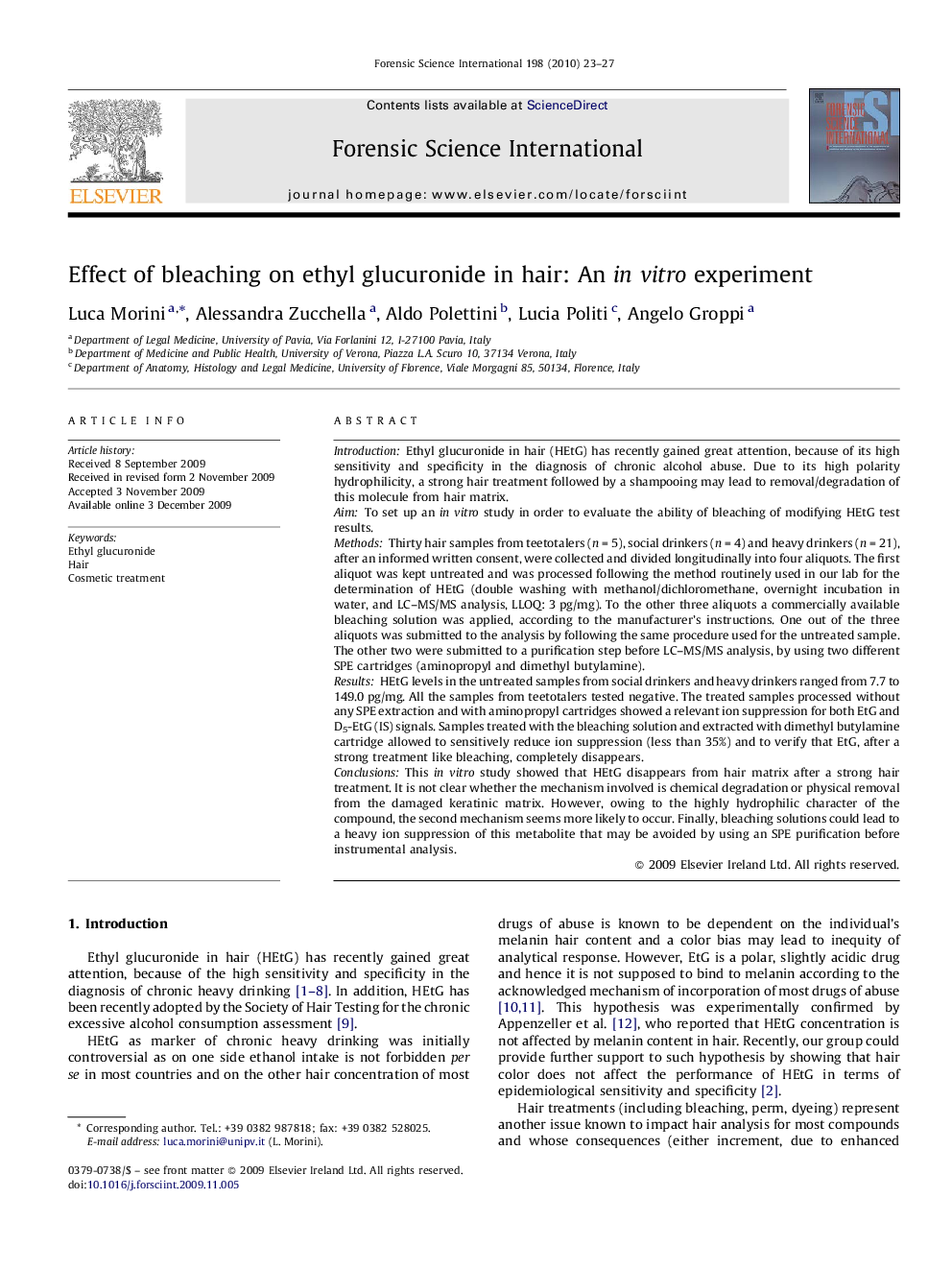| کد مقاله | کد نشریه | سال انتشار | مقاله انگلیسی | نسخه تمام متن |
|---|---|---|---|---|
| 97066 | 160480 | 2010 | 5 صفحه PDF | دانلود رایگان |

IntroductionEthyl glucuronide in hair (HEtG) has recently gained great attention, because of its high sensitivity and specificity in the diagnosis of chronic alcohol abuse. Due to its high polarity hydrophilicity, a strong hair treatment followed by a shampooing may lead to removal/degradation of this molecule from hair matrix.AimTo set up an in vitro study in order to evaluate the ability of bleaching of modifying HEtG test results.MethodsThirty hair samples from teetotalers (n = 5), social drinkers (n = 4) and heavy drinkers (n = 21), after an informed written consent, were collected and divided longitudinally into four aliquots. The first aliquot was kept untreated and was processed following the method routinely used in our lab for the determination of HEtG (double washing with methanol/dichloromethane, overnight incubation in water, and LC–MS/MS analysis, LLOQ: 3 pg/mg). To the other three aliquots a commercially available bleaching solution was applied, according to the manufacturer's instructions. One out of the three aliquots was submitted to the analysis by following the same procedure used for the untreated sample. The other two were submitted to a purification step before LC–MS/MS analysis, by using two different SPE cartridges (aminopropyl and dimethyl butylamine).ResultsHEtG levels in the untreated samples from social drinkers and heavy drinkers ranged from 7.7 to 149.0 pg/mg. All the samples from teetotalers tested negative. The treated samples processed without any SPE extraction and with aminopropyl cartridges showed a relevant ion suppression for both EtG and D5-EtG (IS) signals. Samples treated with the bleaching solution and extracted with dimethyl butylamine cartridge allowed to sensitively reduce ion suppression (less than 35%) and to verify that EtG, after a strong treatment like bleaching, completely disappears.ConclusionsThis in vitro study showed that HEtG disappears from hair matrix after a strong hair treatment. It is not clear whether the mechanism involved is chemical degradation or physical removal from the damaged keratinic matrix. However, owing to the highly hydrophilic character of the compound, the second mechanism seems more likely to occur. Finally, bleaching solutions could lead to a heavy ion suppression of this metabolite that may be avoided by using an SPE purification before instrumental analysis.
Journal: Forensic Science International - Volume 198, Issues 1–3, 20 May 2010, Pages 23–27